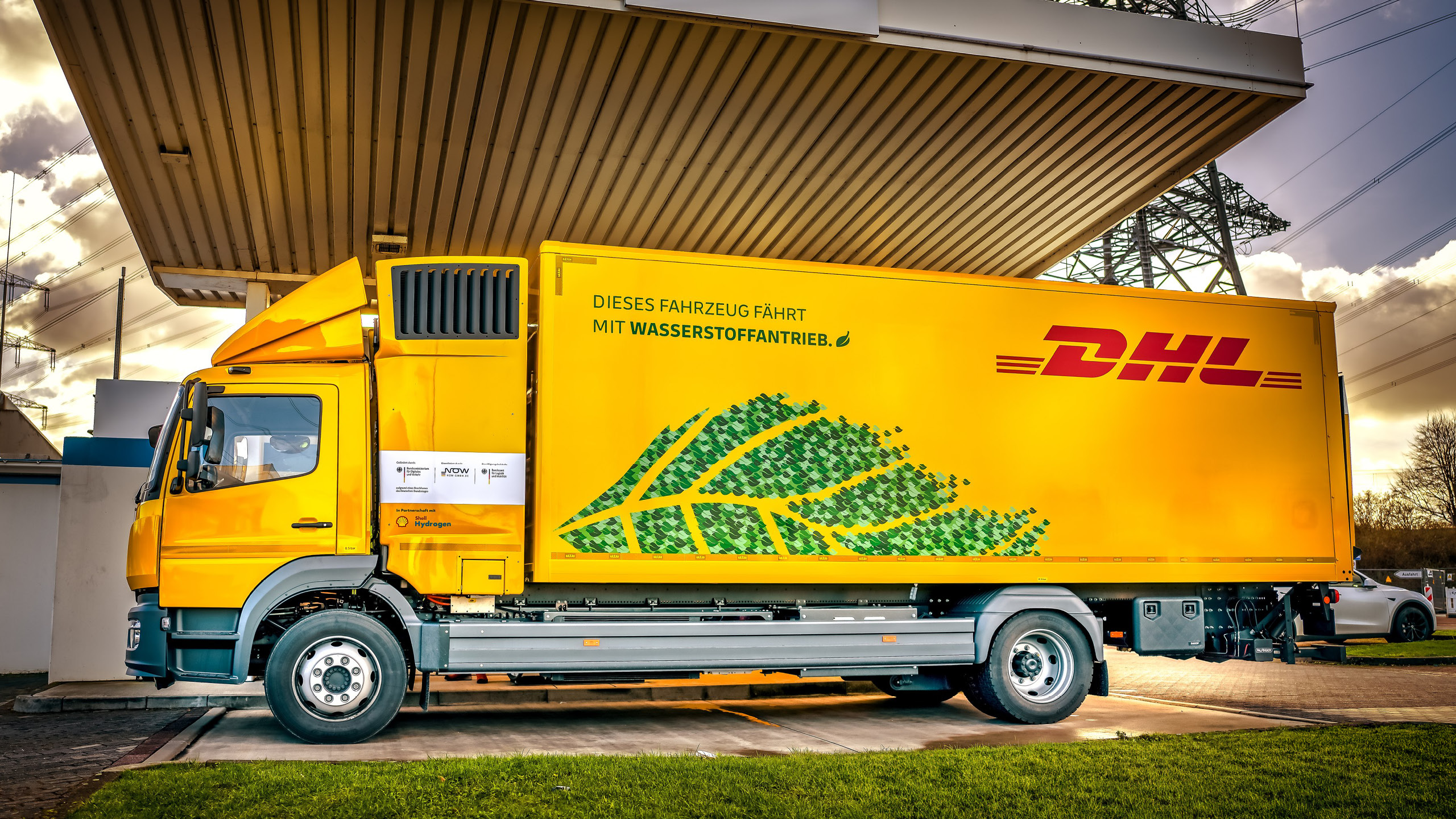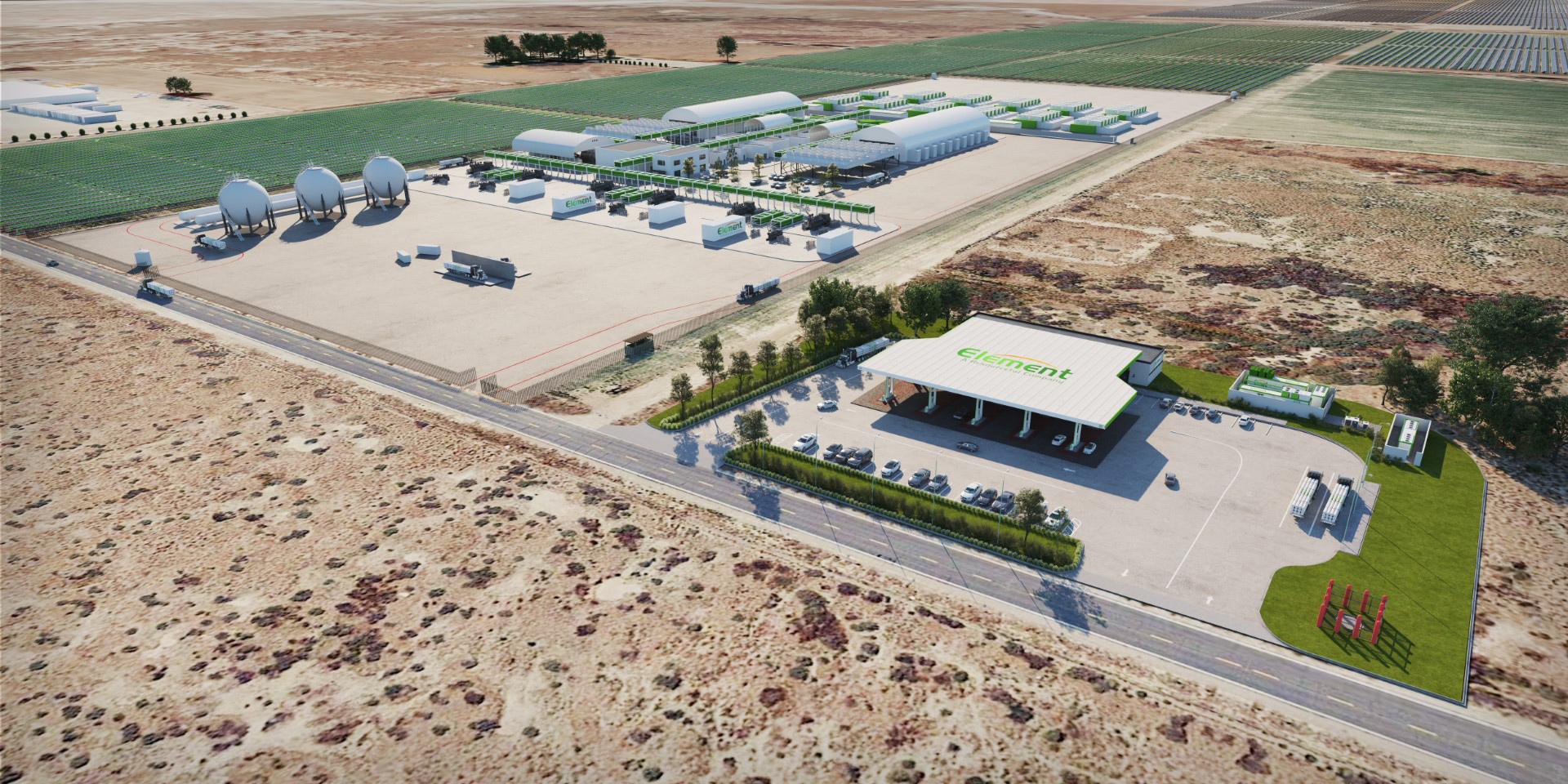
While federal support for clean energy faces uncertainty, heavy-duty freight transport is quietly building the economic foundation for hydrogen adoption. A new generation of projects, led by companies betting their own capital, suggests the technology may finally stand on its own merits.
The clearest signal comes from Vernon, California, where Avina is constructing what will become the country's largest hydrogen production and dispensing facility. Set to open this October, the $50 million project represents a fundamental shift in how the industry approaches clean fuel economics.
The Economics Are Finally Adding Up
Unlike earlier hydrogen ventures that relied heavily on government backing, this new wave focuses on commercial viability. The rapid market growth reflects increasing confidence in hydrogen's commercial potential for heavy-duty applications.

"We certainly see us getting there in a relatively short amount of time." (referring to achieving cost parity with diesel at around $10 per kilogram)
Vishal Shah, founder and CEO of Avina
Key Market Indicators
- Hydrogen truck market projected to grow at 43.7% CAGR from 2025 to 2032
- Global hydrogen truck market valued at $4.29 billion in 2024
- Current hydrogen fuel costs: $20-30/kg, targeting $10/kg for diesel parity
- Avina's hydrogen facility capacity: 4 metric tons of compressed hydrogen daily
Why Freight Leads the Charge
Heavy-duty trucking presents hydrogen's strongest business case for three compelling reasons. First, the weight and range requirements make battery-electric solutions impractical for long-haul routes. Second, fleet operators have predictable routes and centralized fueling, solving the infrastructure chicken-and-egg problem.
Most importantly, freight companies face increasingly strict emissions regulations with limited alternatives for long-haul, heavy-duty operations. The sector's focus on predictable routes and centralized fueling infrastructure makes it ideal for hydrogen adoption.

Commercial Pilots Show Promise
Major logistics companies are moving beyond studies to actual deployment. DHL Freight launched hydrogen truck pilots across Europe as part of the H2Haul project, an EU-funded initiative testing 16 heavy-duty hydrogen fuel cell trucks in real-world commercial operations.
Similarly, General Motors partnered with Southern Company on a hydrogen worksite program using GM's HYDROTEC fuel cell technology. The medium-duty trucks operate in commercial settings, demonstrating practical applications beyond pilot testing.
The Technology Infrastructure Gap
The Vernon facility addresses hydrogen's biggest challenge: reliable fuel supply. By combining production and dispensing at a single location, Avina eliminates transportation costs that typically add $5-8 per kilogram to hydrogen pricing.

"Knowing that there is all this legislative requirement to go as green as you can, how do you get there? Clean hydrogen is one of those good mediums that addresses both: It puts out very low emissions, plus, volume-wise, it can handle what would traditionally be provided with common fuel sources like natural gas and petroleum."
Margie Otto, Assistant General Manager, Vernon Public Utilities
The facility will use 100% renewable electricity to power electrolyzer machines that split water into hydrogen. This "green hydrogen" approach eliminates the carbon emissions associated with traditional steam methane reforming production methods.
Regional Advantages Drive Competition
California's regulatory environment creates natural demand for zero-emission freight solutions. The state's commitment to carbon neutrality by 2045 means fleet operators must transition regardless of federal incentives.
This policy certainty attracts private investment. Element Resources is building the $1.85 billion Lancaster Clean Energy Center, while the Los Angeles Department of Water and Power converts its Scattergood plant to hydrogen capability.

>> In Other News: Pfluger, Crenshaw Introduce Bill to Speed Up Class VI Primacy
Breaking Through Cost Barriers
Industry analysis suggests hydrogen trucks will achieve economic parity with diesel by 2030. Current total cost of ownership remains 30% higher, but declining renewable energy prices and improving fuel cell efficiency are closing the gap rapidly.
"They are one of the first to actually work through all the details of this to see if it can actually be cost-effective today."
Jack Brouwer, director of UC Irvine's Clean Energy Institute
| Cost Factor | Current | 2030 Target |
|---|---|---|
| Hydrogen fuel ($/kg) | $20-30 | $10 |
| Truck price premium | 30% higher | Price parity |
| Fueling station cost | $1-1.5M | $800K |
Market Forces Override Politics
Despite federal subsidy cuts, private investment continues flowing into hydrogen freight projects. The business case doesn't depend on government support when fleet operators face emissions mandates and customers demand sustainable shipping.
State-level incentives and carbon pricing mechanisms create market value for zero-emission transport that transcends political cycles. California's Low Carbon Fuel Standard, for example, provides ongoing revenue streams independent of federal programs.
Infrastructure Investment Accelerates
The hydrogen ecosystem is reaching critical mass as multiple players invest simultaneously. Fuel cell manufacturers, hydrogen producers, and fleet operators are coordinating investments to ensure supply and demand develop together.
This coordinated approach differs from earlier attempts that focused on single components. Today's projects like Vernon integrate production, storage, and distribution to optimize economics from day one.
The Path Forward for Commercial Adoption
Hydrogen freight transport stands at an inflection point where market fundamentals matter more than subsidies. The Vernon facility and similar projects demonstrate that companies can build viable businesses around clean hydrogen when they focus on the right applications.
As Brouwer notes, "It's still going to be more expensive than diesel, but if they can get close, that's going to be super exciting. Because then, as the technology costs go down their regular cost curve, we're going to start to find people adopting this technology."
The freight industry's embrace of hydrogen reflects broader market realities: regulations require zero emissions, customers demand sustainable shipping, and the technology finally delivers practical solutions. Government incentives helped launch the sector, but commercial success will sustain it.
Subscribe to the newsletter
Daily decarbonization data and news delivered to your inbox
Follow the money flow of climate, technology, and energy investments to uncover new opportunities and jobs.
Latest issues
-
Nebraska's 3-Plant Ethanol CCS Gamble Pays Off Big
Inside This Issue 🌽 Nebraska's 3-Plant Ethanol CCS Gamble Pays Off Big 🧊 New Evaporative Crystallizer Design Accelerates Direct-Air Carbon Capture ✈️ From SAF to Solar: DHL’s Bold Steps Toward Net...
-
SAF Output Doubled, So Why Is IATA Sounding Alarms?
Happy New Year from Decarbonfuse! As we wrap up 2025, we want to thank you for being part of the growing Decarbonfuse community. Your engagement and feedback have helped make this platform a trust...
-
$213 Per Tonne: Inside the Latest Multi-Pathway CDR Deal
Inside This Issue 💸 $213 Per Tonne: Inside the Latest Multi-Pathway CDR Deal 🏛️ Clean Energy Technologies Affiliate Vermont Renewable Gas Advances Regulatory Review 💧 Fusion Fuel’s BrightHy Soluti...
Company Announcements
-
CES 2026 - Doosan Presents Comprehensive Energy Solutions for the AI Era
Doosan Group, through its energy subsidiaries Doosan Enerbility and HyAxiom, will unveil a portfolio of next-generation energy solutions designed to meet the massive power demands of the AI era. Th...
-
From Thin Air to Fighter Jets: A New American Way to Make Carbon Fiber
Mars Materials, Inc. and North Carolina State University successfully validated a CO2-derived precursor for carbon fiber manufacturing. Mars Materials, Inc. PBC ("MM" or the "Company"), a public b...
-
Greentown Labs Announces Go Make 2026 With Shell and Technip Energies
Greentown Labs, the world's largest climatetech and energy incubator, announced Greentown Go Make 2026, an open-innovation program with Shell Catalysts & Technologies and Technip Energies focus...
-
SoCalGas Connects Its First Landfill-Based Renewable Natural Gas Project to Its Pipeline System
Southern California Gas Company (SoCalGas) is now accepting renewable natural gas (RNG) produced at the new WM Simi Valley RNG Facility into its pipeline system, marking the first time SoCalGas has...